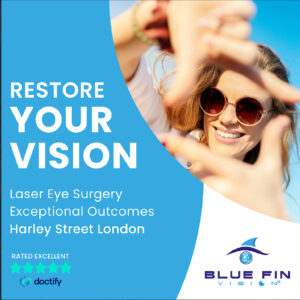Refractive lens exchange (RLE) is a transformative procedure for individuals who are seeking a permanent solution to vision problems. It is especially beneficial for those whose eyes have become less suitable for traditional laser vision correction methods, such as LASIK or PRK. In particular, RLE is frequently recommended for people over 40 who Refractive lens exchange experience presbyopia, the age-related decline in near vision. This surgery offers a way to address both presbyopia and other refractive issues like nearsightedness (myopia), farsightedness (hyperopia), and astigmatism.

The primary appeal of RLE lies in its ability to correct multiple vision problems simultaneously. After removing the natural lens, the surgeon replaces it with an artificial intraocular lens (IOL) designed specifically for the patient’s needs. These IOLs come in several varieties, including monofocal, multifocal, and toric lenses. Monofocal lenses focus on a single distance, typically offering clear vision for either near or far distances. Multifocal lenses, on the other hand, provide multiple focal points, allowing for clear vision at various distances—both near and far—without the need for glasses. Toric lenses are used to correct astigmatism, offering better clarity by compensating for irregularities in the cornea’s shape.
Patients who opt for RLE often do so because they seek greater independence from corrective eyewear. This can be particularly life-changing for individuals who are tired of the constant reliance on glasses or contact lenses for daily activities. For many, the decision to undergo RLE represents a shift towards more freedom in their vision, as it offers a more permanent solution to refractive issues compared to traditional eyewear.
The safety of RLE has been well-documented, with high success rates and relatively low risks. The procedure typically takes around 15 to 30 minutes and is performed under local anesthesia. While it is less invasive than some other types of surgery, it still carries the potential for complications, such as infection, inflammation, or changes in the shape of the cornea. However, these issues are rare, and most patients recover quickly with minimal discomfort.
Post-surgical recovery is generally smooth, and most patients experience significant improvements in vision within a few days. Initial blurry vision and mild discomfort may occur, but these symptoms usually subside as the eye heals. It is essential for patients to follow post-operative care instructions carefully, including using prescribed eye drops and attending follow-up appointments to monitor their progress.
In conclusion, refractive lens exchange is a valuable option for individuals looking to correct refractive errors and regain independence from glasses or contact lenses. With a high success rate and the potential for long-term visual improvement, RLE can significantly enhance the quality of life for those who are eligible for the procedure, offering them clearer, more vibrant vision without the constraints of traditional eyewear.